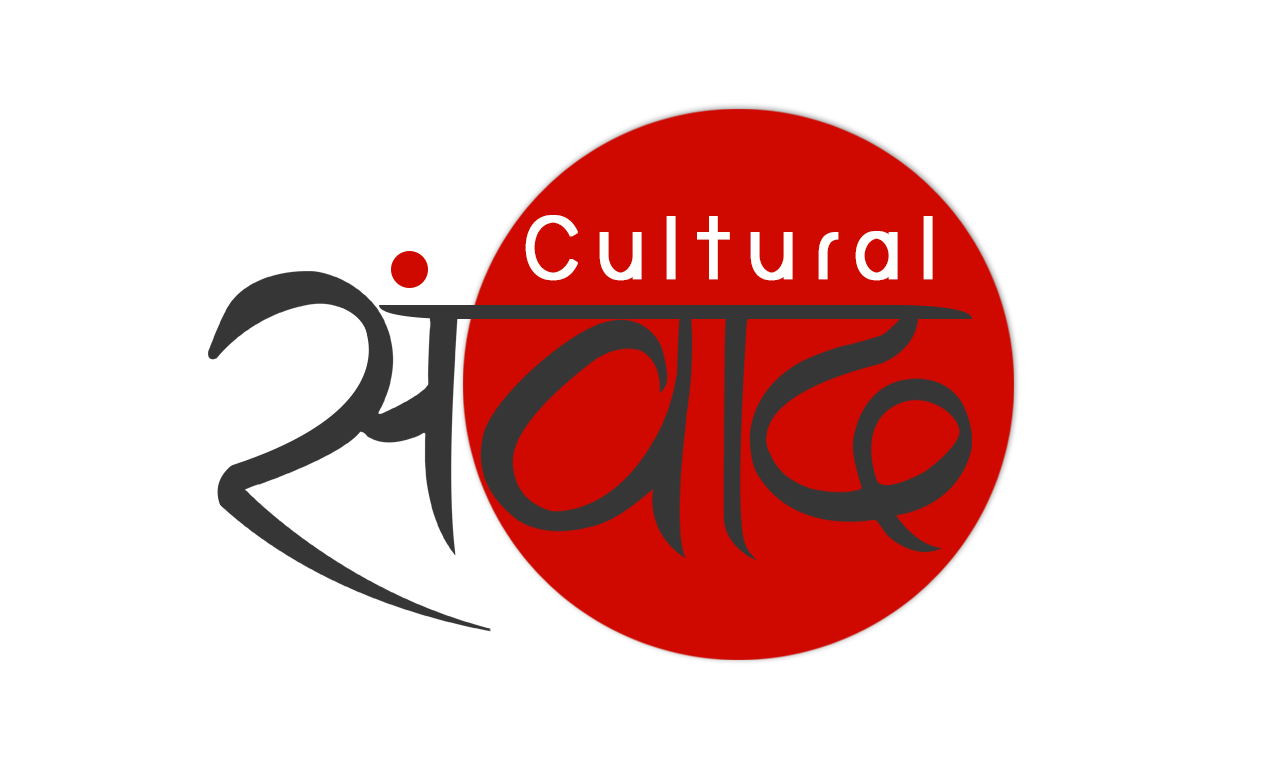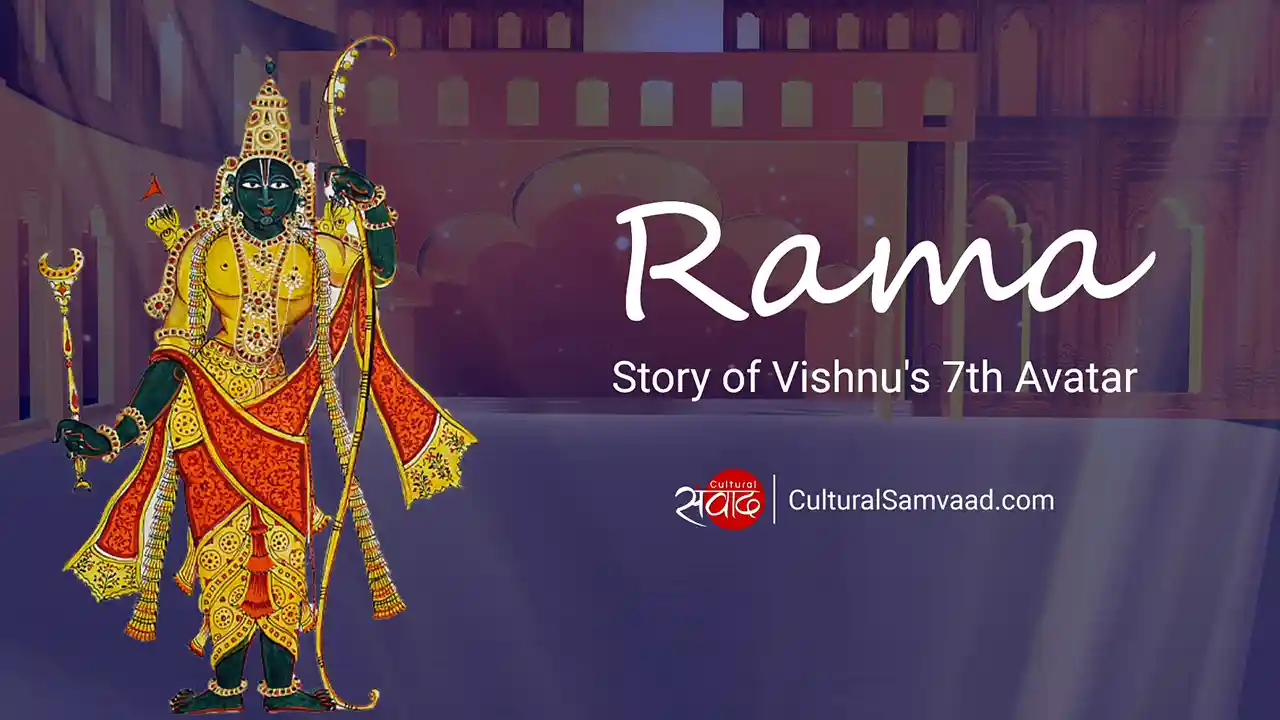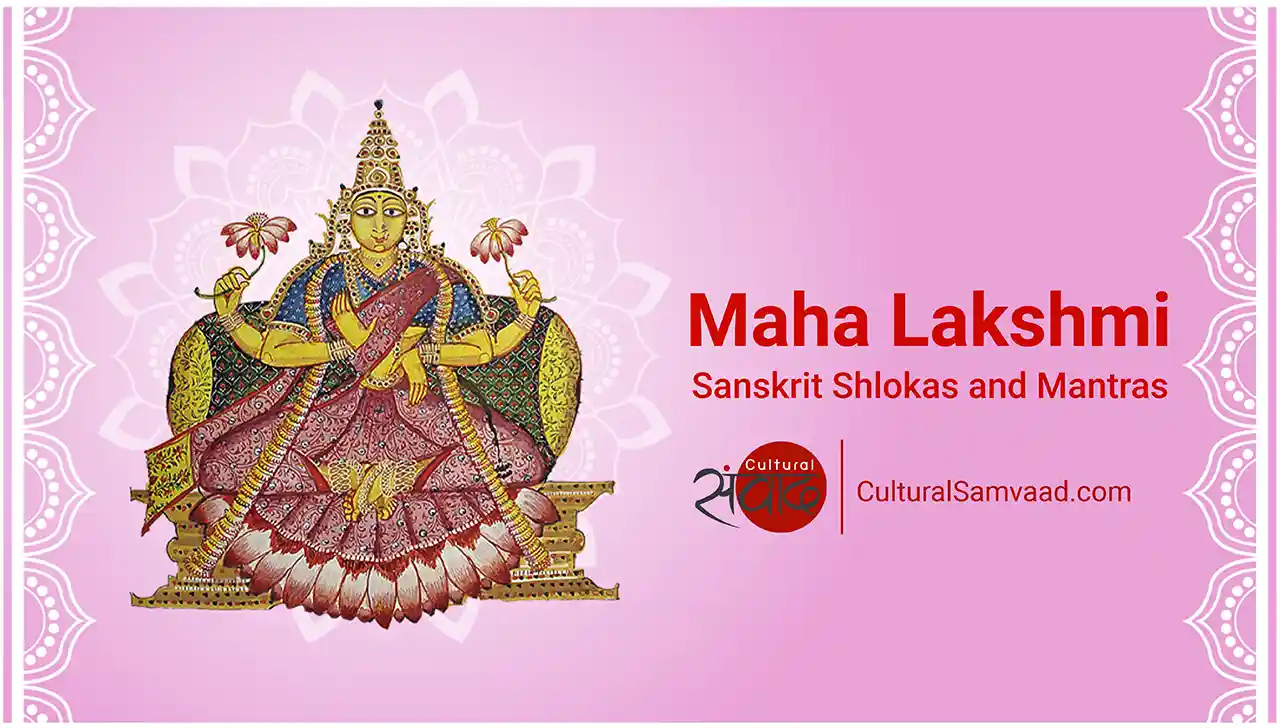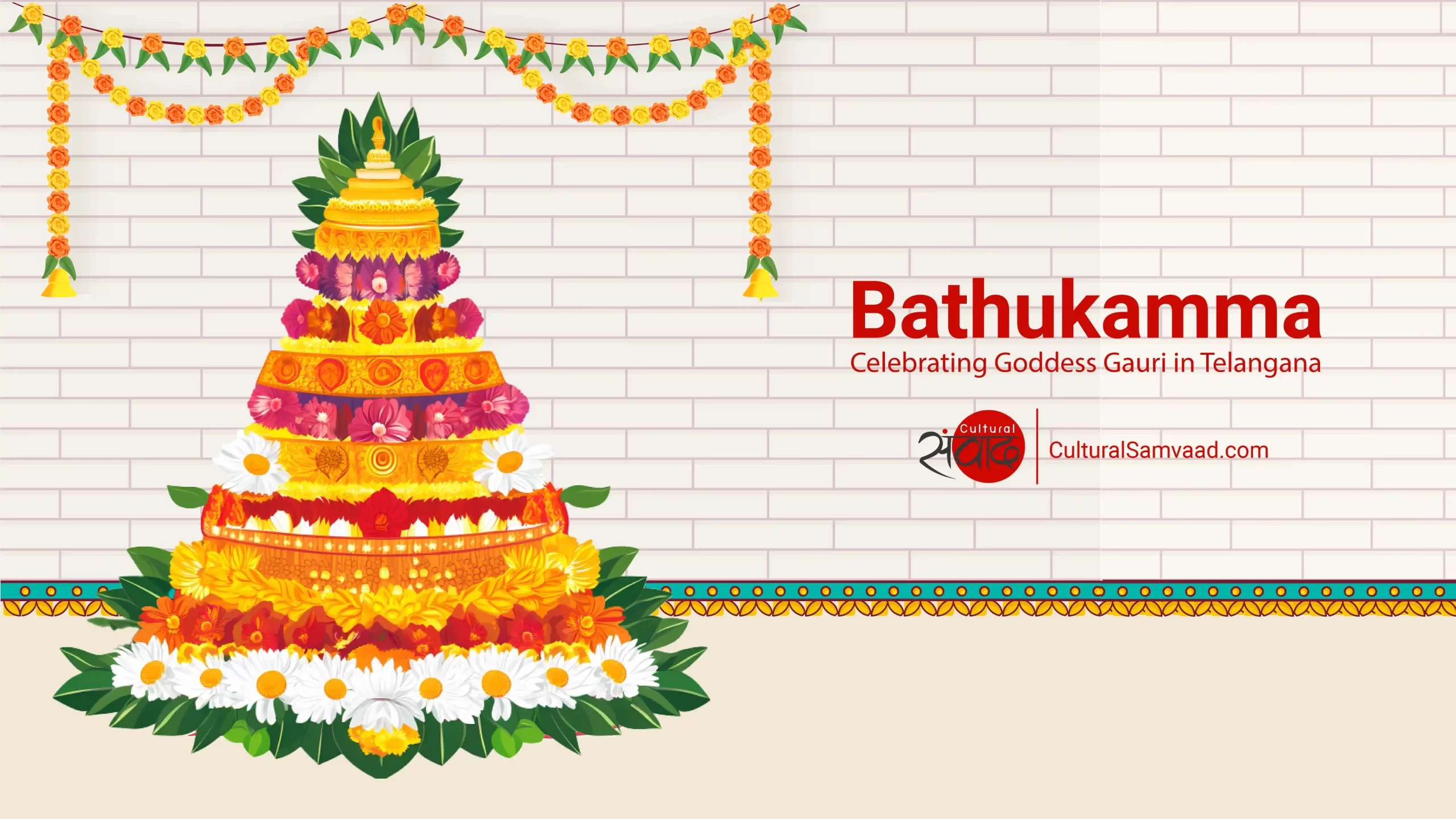
Join Cultural Samvaad’s WhatsApp community
The name Kālidāsa is synonymous with natural beauty, lyrical poetry, dramatic stories, sensuous heroines and valorous heroes in classical Sanskrit literature. His play Abhijñānaśākuntalam was one of the first plays from India to be translated into English. The poem Meghadūta is a prototype of its genre (dūtakāvyam or messenger poetry) and has inspired many works and writers including some from the West. The whole genre could be said to have begun with this work. The importance of the work within the class of Sanskrit classical literature as a khaṇḍakāvya (short lyrical poetry as against a Mahākāvya which is an epic poem) can be gauged by the number of commentaries that have been written on the work.
Meghadūta – The Theme
So, what is it that which makes the Meghadūta an enduring beacon of lyrical poetry in Sanskrit literature? To answer that, let us understand the theme of the poem in brief. The whole poem is nothing but the message that a husband (Yakṣa) separated from his wife (due to punishment meted out by Kubera) sends to his wife through a messenger. The messenger is a rain cloud and therefore, an inanimate object.
The poem has two parts – Pūrvamegha and Uttaramegha. The first part of the poem or Pūrvamegha, is a geographical description of India or Bhāratvarsha on the path that the Yakṣa (the Yakṣa lives in Rāmagiri in the Vindhyas) asks the cloud to take in order to reach his hometown of Alakā in the Himalayas. The descriptions of the places and people that the cloud will encounter on his way are one of the best in the entire Sanskrit literature. The description of Alakā, the condition in which the cloud is likely to find his wife and the message itself which is of hope and the joyous return of the husband after the end of the rainy season make up the second part known as the Uttaramegha.
Meghadūta – A Literary Analysis
The poem continues to be a textbook case where all the five main schools of poetic analysis can be applied and the five features generally expected in good literature appear in equal measures and perfect balance. Where most poems have an abundance of one feature and the others in a supporting role, Meghadūta uses all the features in the best possible manner.
To refresh the reader’s memory, it is worth stating that the five features are:
- the employment of judicious use of figures of speech (alaṅkāra),
- appropriate use of metre and style (guṇarīti),
- sublime application of suggested sense (dhvani),
- the right balance of emotions and feelings (rasasiddhānta) and;
- the best stylistic use of stylistic expression (vakrokti).
Meghadūta – A Celebration of Beauty
The whole poem in its descriptive form is a celebration of beauty. This beauty is divided into four types on the basis of the subject matter. Therefore, we have;
- भाषासौन्दर्य Bhāśāsaundarya
- निसर्गसौन्दर्य Nisargasaundarya
- स्त्रीसौन्दर्य Strīsaundarya
- विचारसौन्दर्य Vicārasaundarya
Bhāśāsaundarya or the beauty of language is expressed through the right use of phonetic sound, the metre which is lyrical and no strong words. It is like a lazily flowing stream. The first verse itself sets in the tone of the whole work. When spoken aloud, it just meanders softly through speech rather than jump sharply like a waterfall.
कश्चित्कान्ताविरहगुरुणा स्वाधिकारात्प्रमत्तः
शापेनास्तंगमितमहिमा वर्षभोग्येण भर्तुः ।
यक्षश्र्चक्रे जनकतनयास्नानपुण्योदकेषु
स्निग्धच्छायातरुषु वसतिं रामगिर्याश्रमेषु॥१॥
Translation in English:
A certain Yakṣa, had been cursed by his master due to negligence in duty to be separated from his wife for a year. He therefore, took up his abode among the hermitages on Rāmagiri which had a thick growth of shady trees and waters which were rendered holy by the ablutions of Janaka’s daughter (Sitā).
निसर्गसौन्दर्य or description of natural beauty is the forte of the author as also seen in his other works. The ‘word picture’ drawn is so strong and intimate that it is the belief of most scholars that Kālidāsa may have personally visited these places. Probably the love for his hometown (he is believed to be from Ujjain) comes through when he asks the cloud to take a detour as the picturesque city of Ujjayini cannot be missed. The beautiful description of Alakā’s first look is a testimony to the best use of simile. The author compares the Kailāsa mountain to a lover, with the city of Alakā lying on the lap of her lover and the pure white Ganges the garment which is dropped by the lady (city).
तस्योत्सङ्गे प्रणयिन इव स्त्रस्तगङ्गादुकूलां
न त्वं दृष्ट्वा न पुनरलकां ज्ञास्यसे कामचारिन्।
या वः काले वहति सलिलोद्गरमुच्चैर्विमाना
मुक्ताजालग्रथितमलकं कामिनीवाभ्रवृन्दम्॥६६॥
Translation in English:
O, you moving at will, on seeing Alakā with its garment the Ganges dropping from it, lying on its slope as if on the lap of a lover, you will not fail to recognize it; (the city) which having lofty mansions in it, supports in your season, a multitude of clouds, showering water, as a woman does her tresses interwoven with strings of pearls.[1]
Strīsaundarya is expressed through the women who are beautiful and sensuous. More than anything they are graceful in their beauty by being coy. Yet this bashfulness is accompanied by the confidence that each one has in herself. Even in the misery of separation the narration of their state has a beauty all its own. The beautiful eyes of the ladies are compared to a Kunda flower (species of Jasmine) with a black bee sitting on its petal. The stylisation of this comparison is unique, in that it says on the lifting of the eye lashes the eye is seen which looks like the flower!
तामुत्तीर्य व्रज परिचितभ्रूलताविभ्रभाणां
पक्ष्मोत्क्षेपादुपरिविलसत्कृष्णशारप्रभाणाम्।
कुन्दक्षेपानुगमधुकर श्रीमुषामात्मबिम्बं
पात्रीकुर्वन्दशपुरवधूनेत्रकौतूहलानाम्॥५०॥
Translation in English:
Having crossed that river, proceed, making your form an object of curiosity to the eyes of the ladies of Daśapura, which are well acquainted with the sportive movements of the bushy eyebrows, whose dark and variegated lustres flash up owing to the eye-lashes being lifted up, and which rival with the beauty of the bees following the Kunda flowers as they are tossed about.[2]
Vicārasaundarya or the beauty of thought and concept is conveyed through the right use of words and phrases especially when innumerable synonyms are available. The idea of using the Yakṣa as the protagonist is brilliant. The Yakṣas are known for being cursed frequently, taking pleasure in carnal pursuits and generally a part of a couple. This makes the separation from his wife even more poignant and keen.
The analysis of Meghadūta is unending, and every new person brings in a new perspective. Its popularity and depth is testified by the number of commentaries and studies conducted right from medieval times to the present. The present article only introduces the poem and sets the tone for further readings!
Editor’s Note:
Indian literature is strewn with unparalleled word gems in multiple languages which form an integral part of our intangible heritage. At Cultural Samvaad, our endeavour is to feature some of these gems of Indian literature to exhort our readers to revisit/read and enjoy the original work of the author. Please do write to us at editor@culturalsamvaad.com if you would like to read about a particular work or contribute a piece on a work which you think deserves to be (re)discovered.
Reading List:
- The Meghadūta of Kālidāsa – M.R. Kale
- Studies in the History of Sanskrit Poetics – S.K. De
- Dhvani in ‘Meghaduta’- R. K. Murty
End Notes:
[1] Translation taken from The Meghadūta of Kālidāsa – M.R.Kale
[2] Ibid






Brilliant piece Hetal! Keep writing!
Hetal, really enjoyed the introduction to Meghadūta.
Will read the translation soon.
I like your style of writing.
Keep it up.
Description of meghadtutam as a multi layered poem
This was very helpful. Thankyou 🙂
A bit short story could have been added